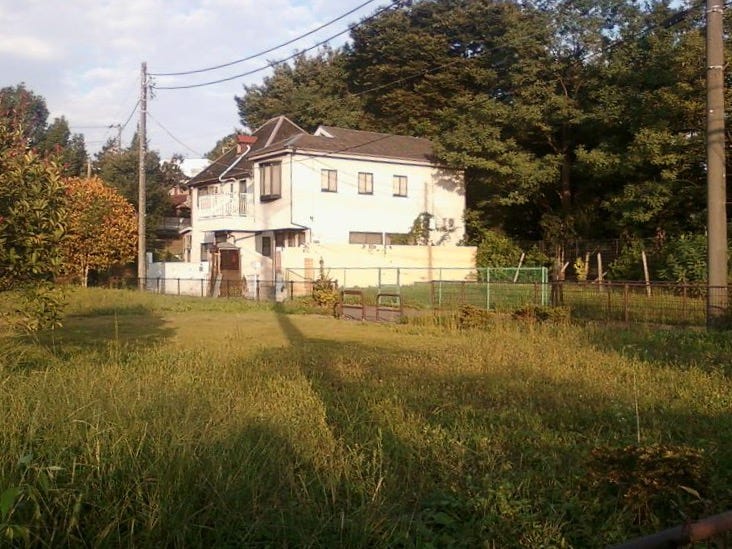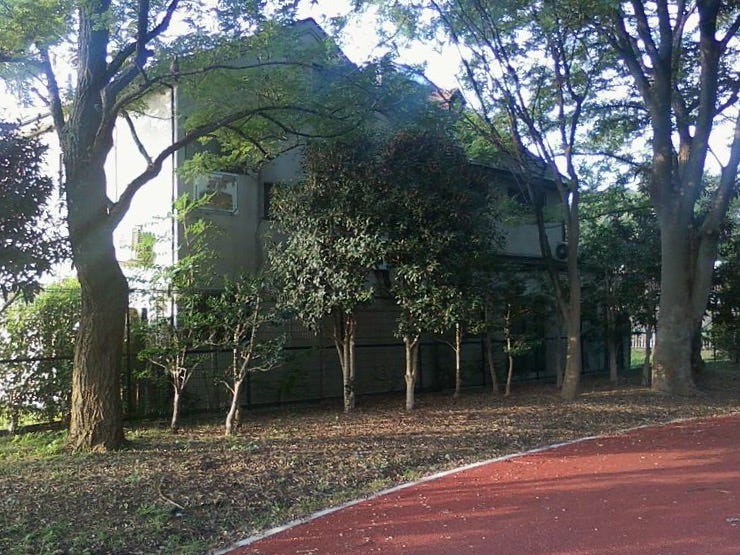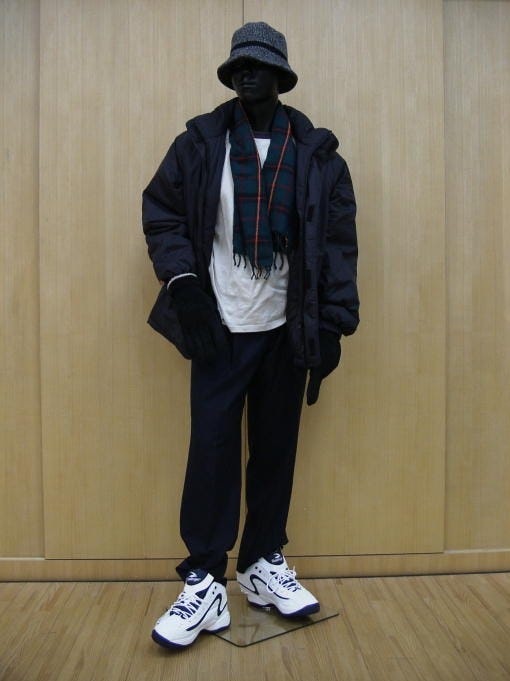The Scary, Strange Setagaya Family Murders
On New Year's Eve 2000, the Miyazawas, a middle-class family in Japan, were found brutally butchered with no explanations or suspects to be found.
Eager to escape the fallout of my parents’ divorce and with a burgeoning interest in Japanese culture, as a high school sophomore in 2004, I made a life-changing decision: I became a foreign exchange student in Japan. I have never felt as safe and comfortable as I did when living in Japan, for reasons ranging from a warm and welcoming host family — with whom I’m still in close contact today! — to the exceptionally low crime rates.
Even Japan has crime, though — some of which is very dark. Few criminal cases have unsettled me as much as the Setagaya family murder.
Please refrain from continuing if you are triggered or disturbed by detailed descriptions of violence!
The Crime Scene
On New Year’s Eve in 2000, an entire family of four — a husband, wife, and their two children — was found brutally murdered in their blood-splattered home, a duplex on the outskirts of metro Tokyo, in an area known as Setagaya. Though the case is typically termed the “Setagaya family murders,” even in Japanese, the surname of the family itself is Miyazawa. The other half of the duplex was occupied by members of their extended family. The mother of Yasuko, the wife, came next door around 10 AM that morning upon realizing calls placed to the adjoining unit suddenly failed to connect. Despite being neighbors, the two talked on the phone frequently. Much to her horror, though, her daughter, son-in-law, grandson, and granddaughter were all already dead.
Strangely enough, the perpetrator clearly and quite conspicuously lingered for some time in the Miyazawa home: he consumed several single-serve ice cream cups along with melon and some tea, he rested and left stains on the living room couch, and he even left a hefty serving of feces in the family toilet, not even bothering to flush. Fecal analysis would determine the pooper was definitely not a member of the family and had eaten sesame seeds and string beans the day before — both of which are mundane, inexpensive ingredients in Japan. Despite Japan’s reputation for thin walls, later testing by investigators would determine only loud thuds were audible in the adjoining unit, only one of which the extended family heard that night.
The Miyazawa family kept a significant stash of cash in the house, the vast majority of which was left behind. The exact starting amount was unclear, but estimates place the amount missing at around 150,000 yen — less than two grand in USD. The family’s identification and credit cards were all laid out and organized but left behind and seemingly mostly unused. The one exception? Computer and credit card history showed an unsuccessful attempt to purchase tickets at a theater frequented by the Miyazawas. Mikio, the father of the family, though a businessman by day, had a love for traditional Japanese theater.
His blood-drained body, peppered with stab and slice wounds, was found at the foot of the stairway on the first floor of the three-story home. The others were found upstairs on the second. His son, Rei, met the most peaceful fate, strangled in his sleep, still tucked into bed. Mikio’s wife, Yasuko, and daughter, Niina were at the foot of a ladder that led to the third floor, a smaller space akin to a finished attic where Yasuko and Niina were known to relax in the late evenings together after, Rei, a couple of years Niina’s junior, went to sleep. Niina’s blood was found on the third floor, suggesting she made it up there at some point after injury, only to succumb to far worse wounds at the foot of the ladder next to her mother. The ladder could be pulled up behind those above, which is perhaps what Yasuko and Niina were seeking to do when they died at its base.
The killer changed clothes while lingering in the residence, leaving behind his original outfit. The aesthetic was men’s skater punk, perhaps to frame the youth in a nearby skating park that Mikio was known to, on occasion, go out and chide, given the house provided ample view of their antics. Mikio was also seen in an argument that December with youth biker gang members, bosozoku. Much as they try to capture the young man’s version of the Hell’s Angels aesthetic and often have ties to organized crime, a grisly murder of four over a mere argument is far-fetched. If the killer was aware of either part of Mikio’s recent past, leaving behind the clothes could be an intentional red herring to frame others.
Interestingly enough, though, shoe prints recovered from blood on the floor established they came from a type of shoe popular in Japan at the time — but a South Korean size variant. Analysis of minerals left on the clothes revealed they were likely laundered in Korean, rather than Japanese, tap water. Type A blood, a typing not present in the Miyazawa family, was isolated early on at the scene, so further genetic testing was run. This revealed DNA of someone mixed race with XY chromosomes, an East Asian father, and a North Mediterranean mother. Analysis of his Y chromosome found a genetic sequence present in 20-25% of Korean people but fewer than 10% of Japanese and Chinese people. None of these individual pieces of evidence prove a definitive and undeniable link to Korea, but the pattern is striking.
Confounding this was what was investigators found in a small bag left behind as part of the ensemble: sand. Our society’s forensic powers are surprisingly precise these days when it comes to sand, given the grains, much as they may look similar to the naked eye, are wildly different under a microscope. Forensic scientists conclusively placed the origin of the gritty grains to the United States, in an area of desert around a hundred miles north of Los Angeles, which includes the area of Edwards Air Force Base. Air force pilots who wind up stationed in Japan are often trained at Edwards. The perpetrator’s mixed heritage is more common in the United States as well, but the clothes still suggest being in Korea at some point. The bag could also be a second-hand acquisition, the sand sourced from a previous owner.
Two murder weapons were found on the scene. The first, a sashimi knife, was brought to the Miyazawa home by the killer. Police were able to trace its purchase to a grocery store in a shopping district nearby the day before, though it did not produce actionable leads. The knife, designed for shaving raw fish into slices, was certainly sharp but not designed for durability. The pointed tip, which the killer clearly relied on for stabbing attacks, broke off in Mikio’s head. Needing to improvise, the killer, at some point thereafter, switched to a santoku knife from the family’s kitchen. These are a form of durable, general-purpose kitchen knife whose popularity outside Japan has grown considerably in recent decades as well.
Despite all of the evidence on the scene, over two decades later, this crime remains unsolved, and the exact reasons for this grisly murder remain unclear. Various theorists have tried to ascribe possible motives. For instance, the entire neighborhood was in the slow process of being repurchased by the government for conversion into additional park space. The Miyazawas were among the last to leave, but they were slated to move out in March. The skaters and bikers with whom Mikio argued are a possibility, but relating in such a way is extreme. Some murders, even premeditated ones, are also random. We may never know the why.
Timeline of Events
In modern Japan, a secular version of Christmas is an incredibly popular holiday. On that day, December 25th, 2000, less than a week before the murders, Yasuko’s father-in-law recalls her joy over the occasion was marred by sightings of a car she did not recognize parked repeatedly in front of the duplex. To her, this seemed suspicious, given the nearby park had plenty of parking and it was not a one-time occurrence, worrying her that the person in the car was scoping out their home.
Foot traffic around the home was fairly common due to the proximity to the park, though eyewitnesses report on December 27th that one person, playing off their presence as a passerby, walked around the property, examining the building. Whether the pedestrian or the parked car were innocent coincidences or part of days-long premeditation remains unclear.
Two days later, on the 29th, a man wearing a skater-style outfit — too underdressed for the cold weather — was seen by several witnesses around Seijogakuenmae Station, a few miles from the Miyazawa home. Authorities traced the acquisition of the sashimi knife used as the initial implement back to purchase with cash at a grocery store in the area that day. The following day, there were reports of a similar-looking man at Sengawa Station, even closer to the duplex where the murders took place.
That evening, on the 30th, the family went out shopping. Neighbors report the car missing from their driveway for a couple of hours, though they clearly made a safe return. Yasuko spoke on the phone to her mother next door — which made the call not going through the next morning all that more odd to her. Niina went to go watch television with the family members in the adjoining unit from around 9:00 PM to 9:30 as well. Everything seemed normal — but Niina’s departure is the last time anyone saw anyone from the family of four alive.
At around 10 PM that night, a passerby reported hearing what they assumed was a couple arguing. Though Mikio and Yasuko had, by all accounts, a very happy and loving marriage, it is possible that they simply had an argument, because, at 10:38 PM, Mikio entered manually his password into his work email. While we cannot rule out this was done under duress, there was no evidence to support that hypothesis, and Mikio often simply checked his email a final time before bed.
Around an hour later, the family members on the other side of the duplex heard a thud, the only sound any of them reported hearing that night. This is theorized to either be Mikio hitting the ground at the bottom of the stairs, knocked back in a fight with the family’s assailant, or the ladder leading to the third floor hitting the floor of the second — a benign explanation for such thuds in the past.
The official theory posited by investigators is that the killer climbed up the back of the house, entering through a window into the second-story bathroom. From there, he proceeded to Rei’s room, probably unnoticed, killing him in his sleep without bloodshed. Some who have researched the case propose he slept through the fracas and was finished off after the rest. Regardless, at least his suffering seemed minimal.
From there, it seems something made Mikio come upstairs, be it just wanting to sleep or hearing something suspicious. Given the presence of his daughter’s blood on the third floor, some theorize she may have encountered the killer in the hallway, suffering minor wounds, and then racing back up to the third floor to safety with her mother, where the ladder could be withdrawn. Later, they returned down to the 2nd floor, perhaps thinking the killer was gone or trying to rescue Rei, only for the killer to show up once more, his sashimi knife traded for a santoku.
Regardless, the official theory places Mikio’s death second. His wounds are consistent with trying to overpower and disarm the attacker at the top of the stairs, taking several wounds from the knife in the process, before being pushed down the stairs, dying shortly thereafter from blood loss compounded by the trauma of the fall. The sharp tip of the original sashimi knife was recovered from his body, which was responsible for all his wounds, unlike his wife and daughter, who were ultimately killed with the family’s own santoku knife.
The family kept a first aid kit, which showed signs of being used to bandage both the wounds of both the daughter and the killer. Presumably, the killer’s usage came after the family was finally finished off. Given the sashimi knife clearly lacked its sharp tip after the fight with Mikio, it is possible he tried to fight the other two with his original weapon, realized he needed a better tool, and gave them some time to regroup. The killer himself was clearly wounded significantly in the struggle beyond what a first aid kit could help, as he used a lot of Yasuko’s menstrual products soaking up his own blood.
The killer’s precise departure time from the Miyazawa home is unclear. Raiding the fridge, resting on the couch, and pilfering through much of the family’s belongings clearly took at least a few hours. His attempt to purchase tickets to the Shiki Theater Company happened at 1:18 AM, a couple of hours after the murders took place. Further activity was recorded on the computer around 10 AM. Some sources attribute this to possibly Yasuko’s mother bumping the mouse, as this was around when she discovered the bodies, though some sources about this clase claim some of Mikio’s bookmarks were accessed around this time as well.
The Cold Trail
Despite the mountains of evidence left behind, little progress was ever publicly announced on this case, even over two decades later. Theories lead to paradoxes. For instance, the yakuza often target Koreans and mixed-race people for recruitment, which matches the killer’s background, but such a slaughter is far too sloppy for their style. If the motive was theft, why was so little stolen? If it was a product of a skate park argument, why did it seem conveniently framed to look that way, with the skater clothes deliberately left behind? If it was reckless youth, why was the person responsible for the copious amounts of blood and fingerprints left all over the scene never found?
A taxi driver in the area reported picking up three men in the early AM hours on the 31st. They were all silent during the ride. One of them seemed injured, and he left some bloodstains in the back seat. This leads some to presume that maybe multiple people were involved in the killing, but this report was never conclusively linked to the killings.
On the afternoon of the 31st, approximately three hours north of the house by car, a man showed up at a medical center wanting a severe cut on his hand stitched up. Staff working there report it was so deep that the bone was visible, yet the man seemed strangely calm. They questioned him about who he was or what happened, but he refused to divulge anything and left as soon as the procedure was done. The staff described the man as looking mid-to-late thirties, not a youthful skater sort — but perhaps one who would pretend the part to confound the trail. At the time, he wore a black jacket and jeans.
Less than a year after the murder, another tragedy would happen on the other side of the world: September 11th. This led to an unprecedented level of heightened surveillance worldwide, including fingerprinting people upon their entry into most developed countries, including Japan. The fingerprints left all over the scene never matched any arrivals in Japan after 2001. Did the killer leave Japan and come back? Have they stayed in Japan since it happened? Or does the theory about possible connections to the military provide a way to circumvent this process entirely?
About three months after the murders, a statue of Jizo, a Japanese Buddhist figure associated with the protection of children both here and in the beyond, was found near the home, close to a creek. Some attribute it to the killer taunting police, though I much prefer the explanation that it was left by someone who was deeply disturbed by these grisly murders and, in some small way, feel like it helped. Yes, it is just a statue, but yes, this is just another article. We all find peace how we can.
Far more importantly, the loved ones of the Miyazawa family deserve to be able to get answers and closure about this perplexing massacre. Though the house was originally slated to be demolished to make way for the park’s expansion just months after the murder in March, it has remained standing for over two decades due to its existence both as a crime scene and a memorial to a grisly tragedy.
Maybe houses aren’t haunted by ghosts, but rather they’re haunted by the need of the living to understand. Over time, the house has fallen progressively into disrepair, with parts now covered by tarps and other coverings. Police periodically pay their respects at their perfectly preserved front door — a door with no one waiting on the other side, because it is us both haunted and haunting, gripped by the search for answers about a tragedy.




